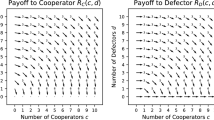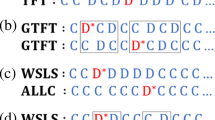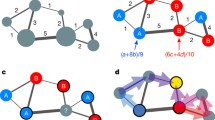Abstract
Evolutionarily stable strategies or ESSs of games among kin have been calculated in the literature by both “personal-fitness” and “inclusive-fitness” methods. These methods were compared by Hines and Maynard Smith (1979) for games with bilinear payoffs. Although Hines and Maynard Smith regarded the first method as correct, they regarded the second method as useful because the inclusive-fitness conditions for an ESS gave necessary conditions for a personal-fitness ESS in the class of games they considered. In general, however, satisfying the inclusive-fitness conditions is neither necessary nor sufficient for satisfying the personal-fitness conditions, although the two methods may often yield identical ESSs. This result is established by reformulating the classic war-of-attrition model to allow variation in energy reserves, assumed to have a Gamma distribution. For this game, the two methods may disagree for intermediate values of relatedness. By the correct method, if the coefficient of variation in energy reserves is sufficiently high, then the game has a unique ESS in pure strategies at which populations with higher coefficients of variation or relatedness display for shorter times. Unrelated contestants are prepared to expend at least half of their reserves. For populations with lower variation coefficients, the ESS exists only if the cost of displaying per unit time is low compared to the rate at which remaining reserves translate into expected future reproductive success for the victor. The critical variation coefficient, below which the ESS exists regardless of cost, decreases from 0.52 to 0 as the coefficient of relatedness increases from 0 to 1. Although there is no assessment, contests are always won by the animal with greater energy reserves in a population at the ESS.
Similar content being viewed by others
References
Fagen, R. M.: When Doves conspire: evolution of nondamaging fighting tactics in a nonrandom-encounter animal conflict model. Amer. Naturalist 115, 858–869 (1980)
Grafen, A.: The Hawk-Dove game played between relatives. Animal Behav. 27, 905–907 (1979)
Hines, W. G. S., Maynard Smith, J.: Games between relatives. J. Theor. Biol. 79, 19–30 (1979)
Maynard Smith, J.: Evolution and the theory of games. Cambridge, U.K.: Cambridge University Press: 1982
Mesterton-Gibbons, M.: The Hawk-Dove game revisited: effects of continuous variation in resource-holding potential on the frequency of escalation. Evol. Ecol. 8, 230–247 (1994)
Meyer, P. L.: Introductory probability and statistical applications, 2nd edn. Reading, MA, Addison-Wesley 1970
Mirmirani, M., Oster, G.: Competition, kin selection and evolutionary stable strategies. Theor. Popul. Biol. 13, 304–339 (1978)
Treisman, M.: The evolutionary restriction of aggression within species: a game theory analysis. J. Math. Psychology 16, 167–203 (1977)
Author information
Authors and Affiliations
Rights and permissions
About this article
Cite this article
Mesterton-Gibbons, M. On the war of attrition and other games among kin. J. Math. Biol. 34, 253–270 (1996). https://doi.org/10.1007/BF00160496
Received:
Revised:
Issue Date:
DOI: https://doi.org/10.1007/BF00160496




